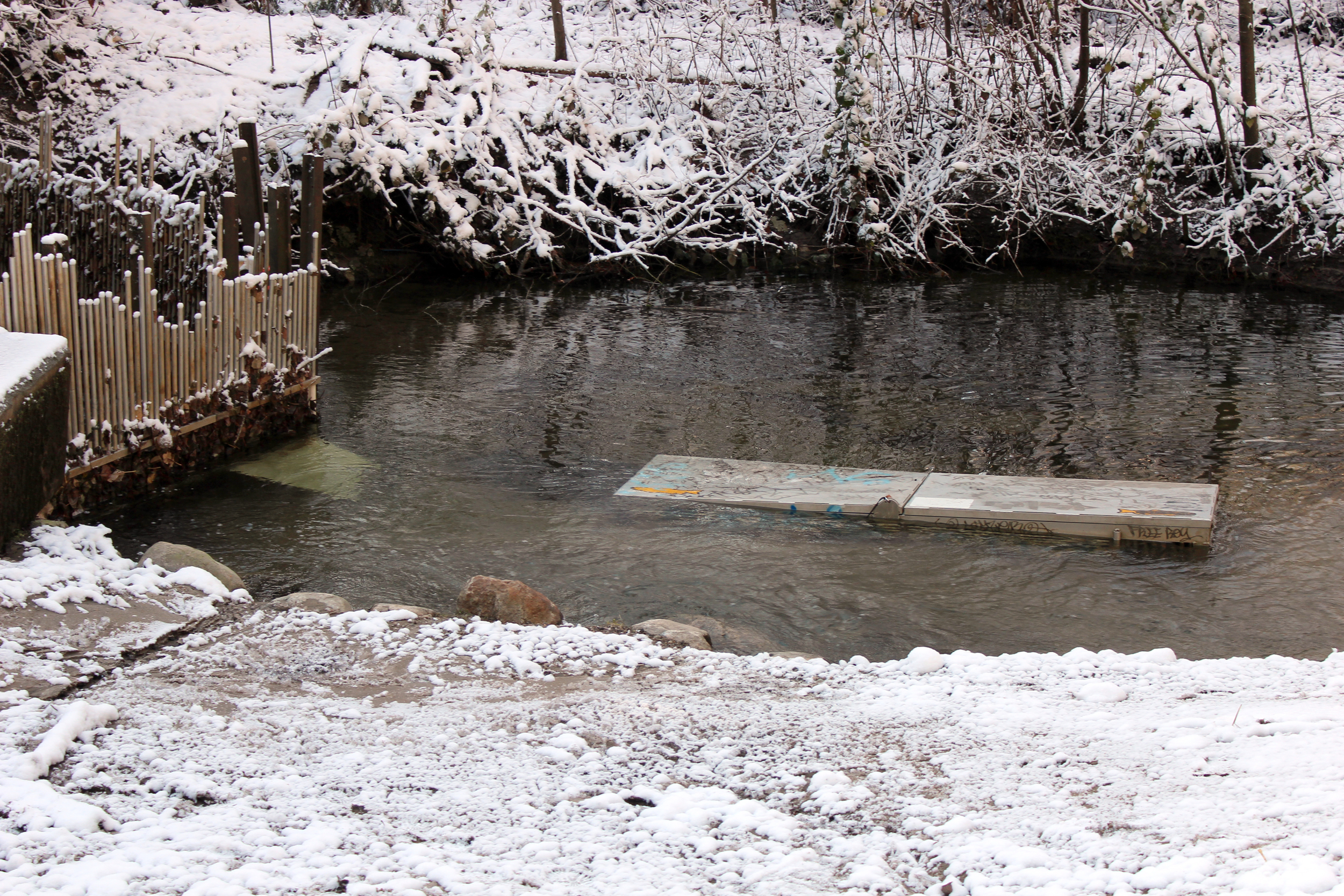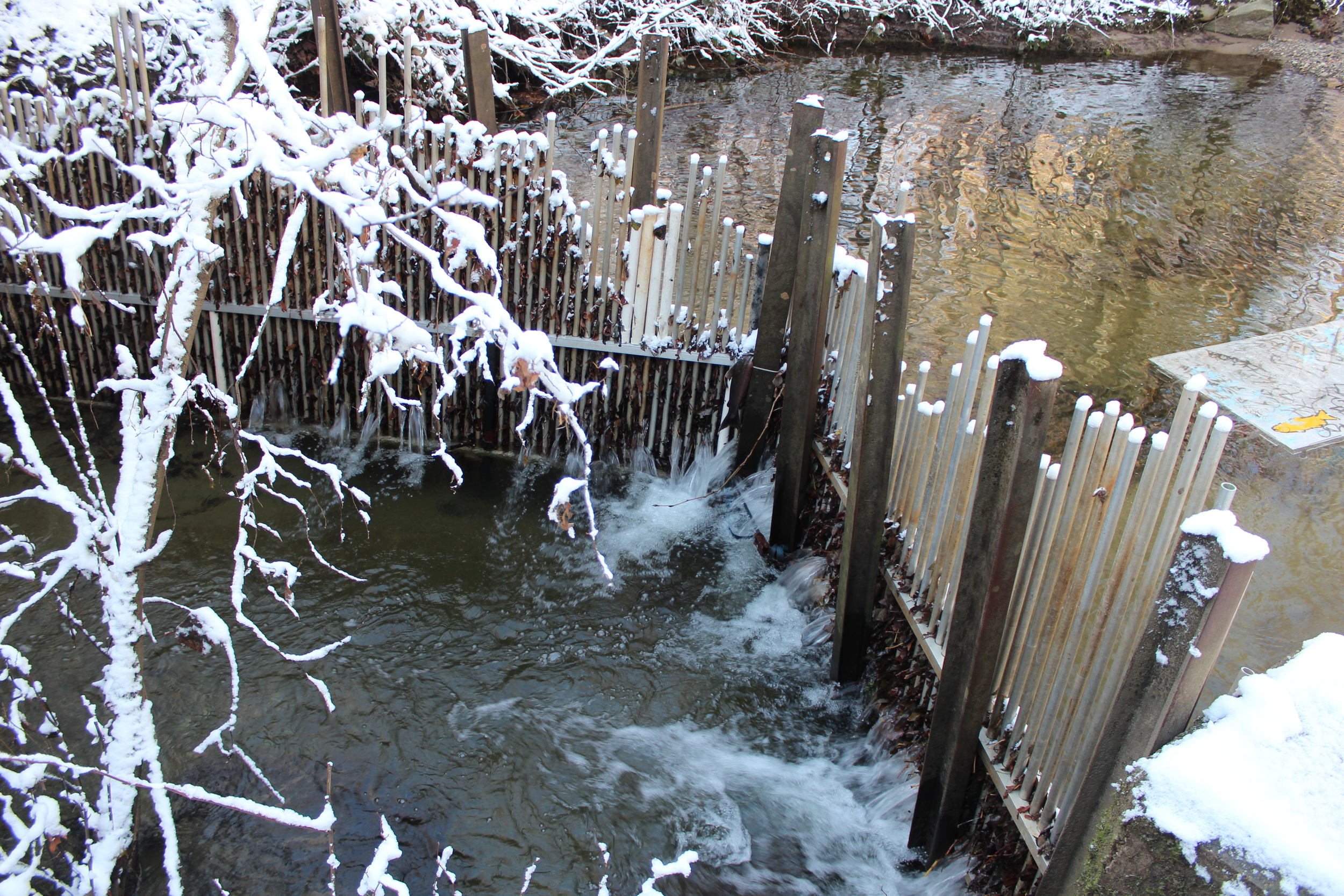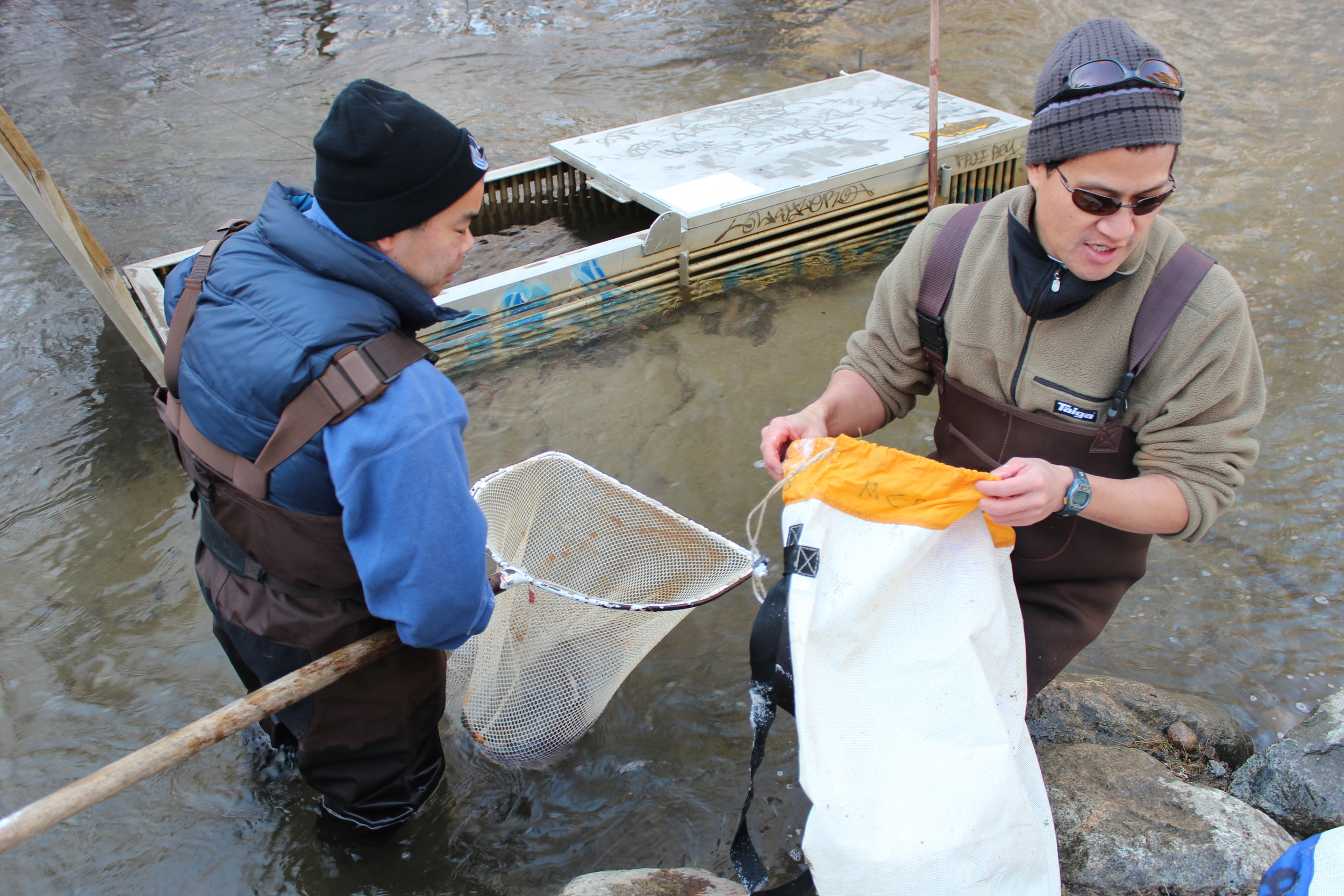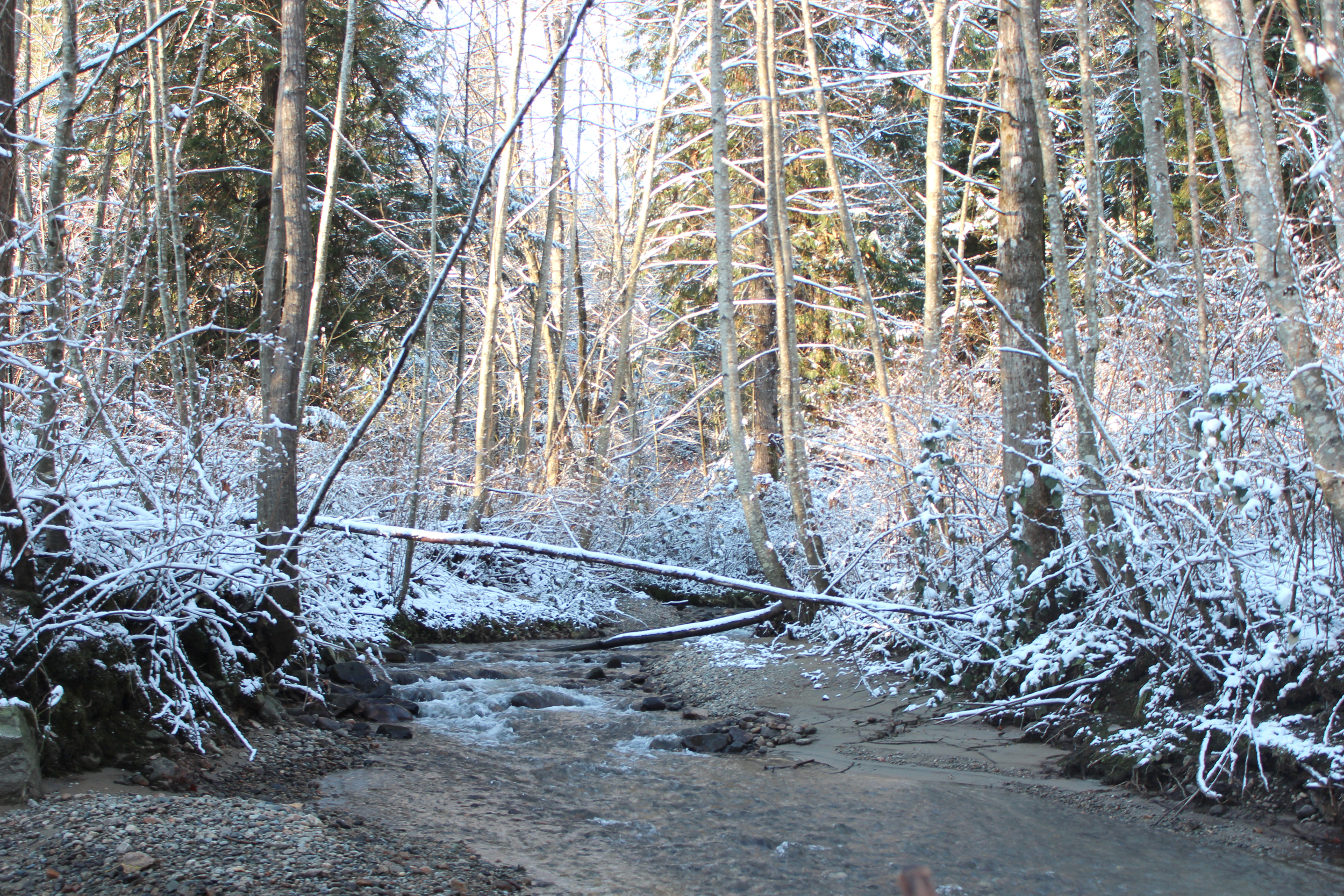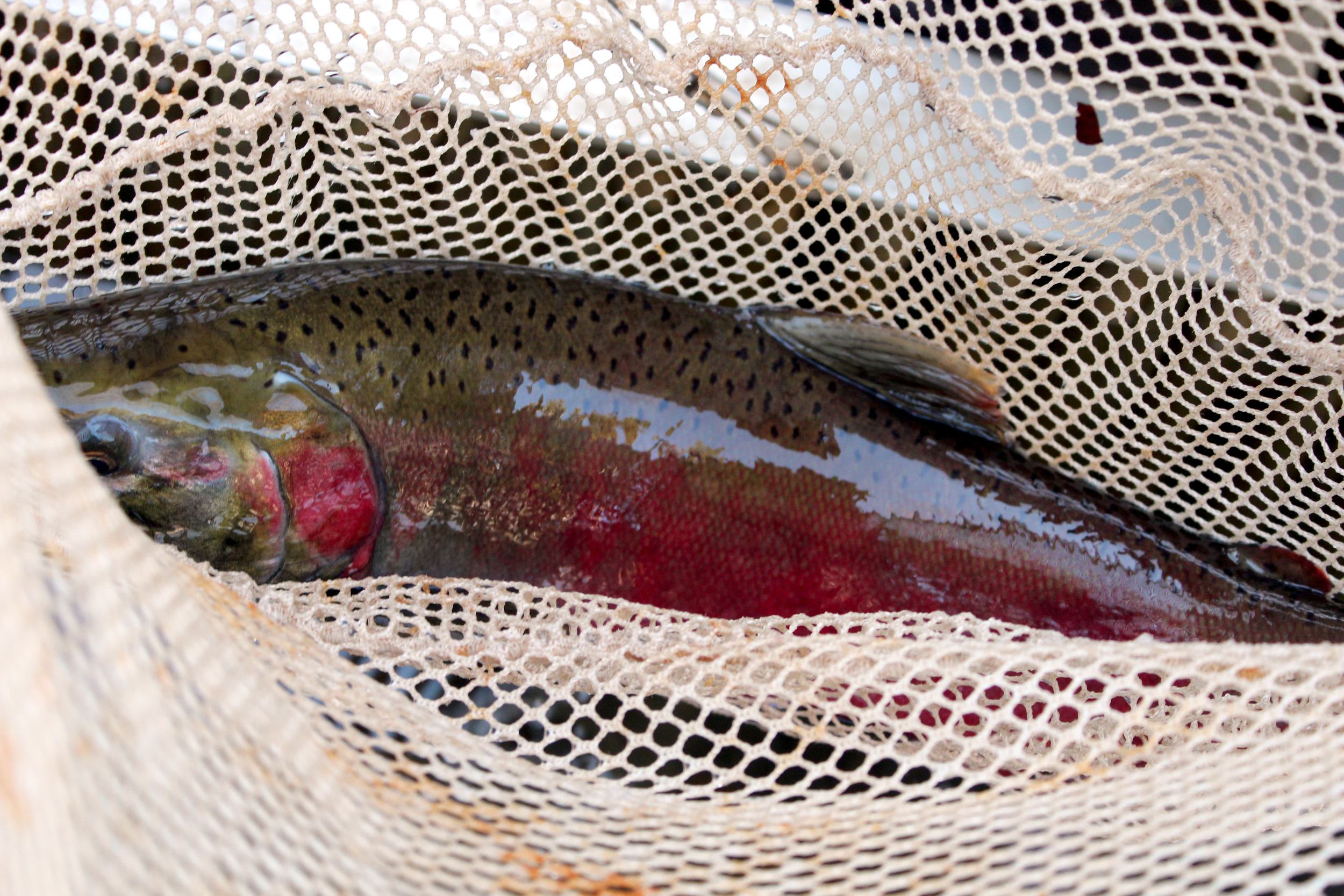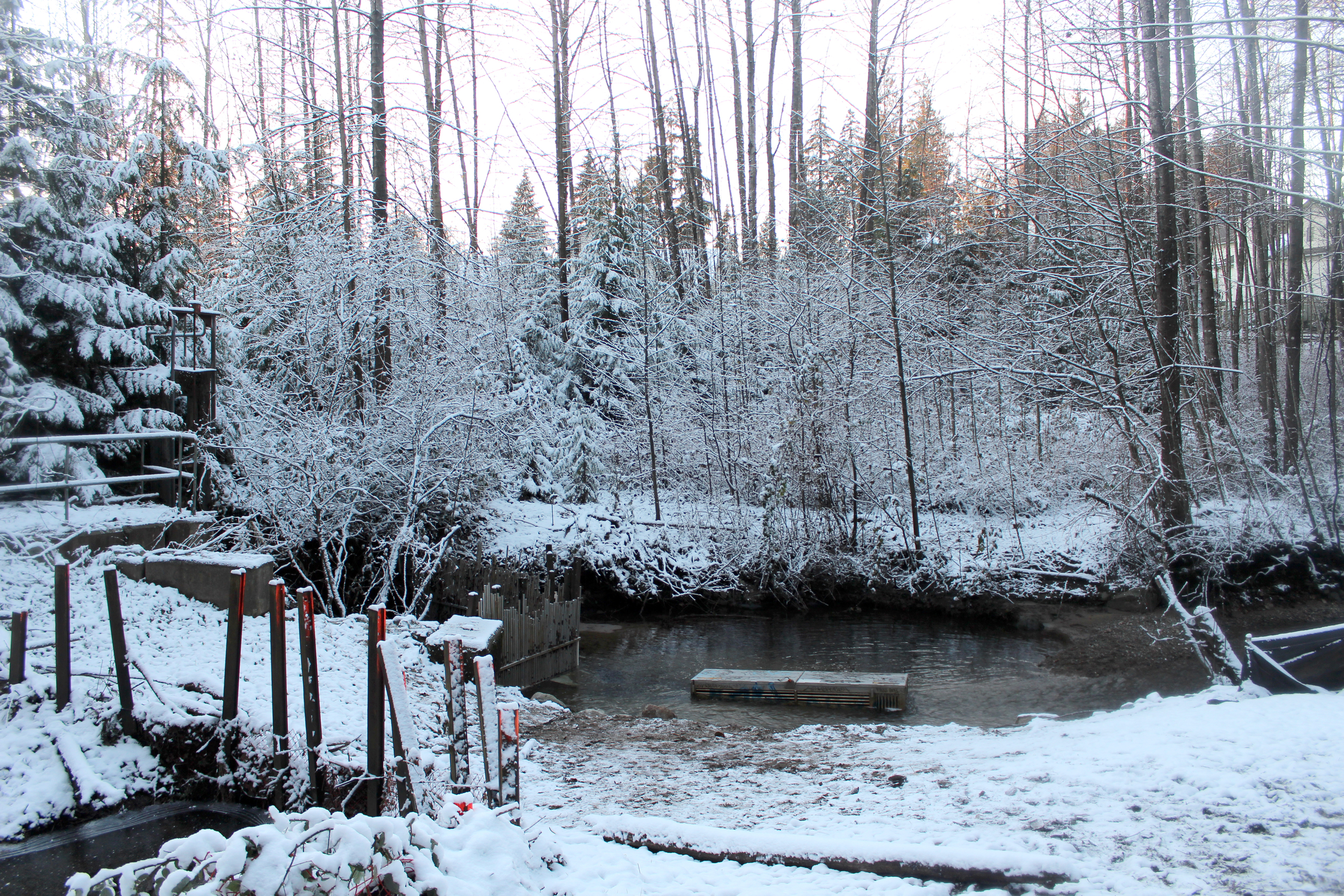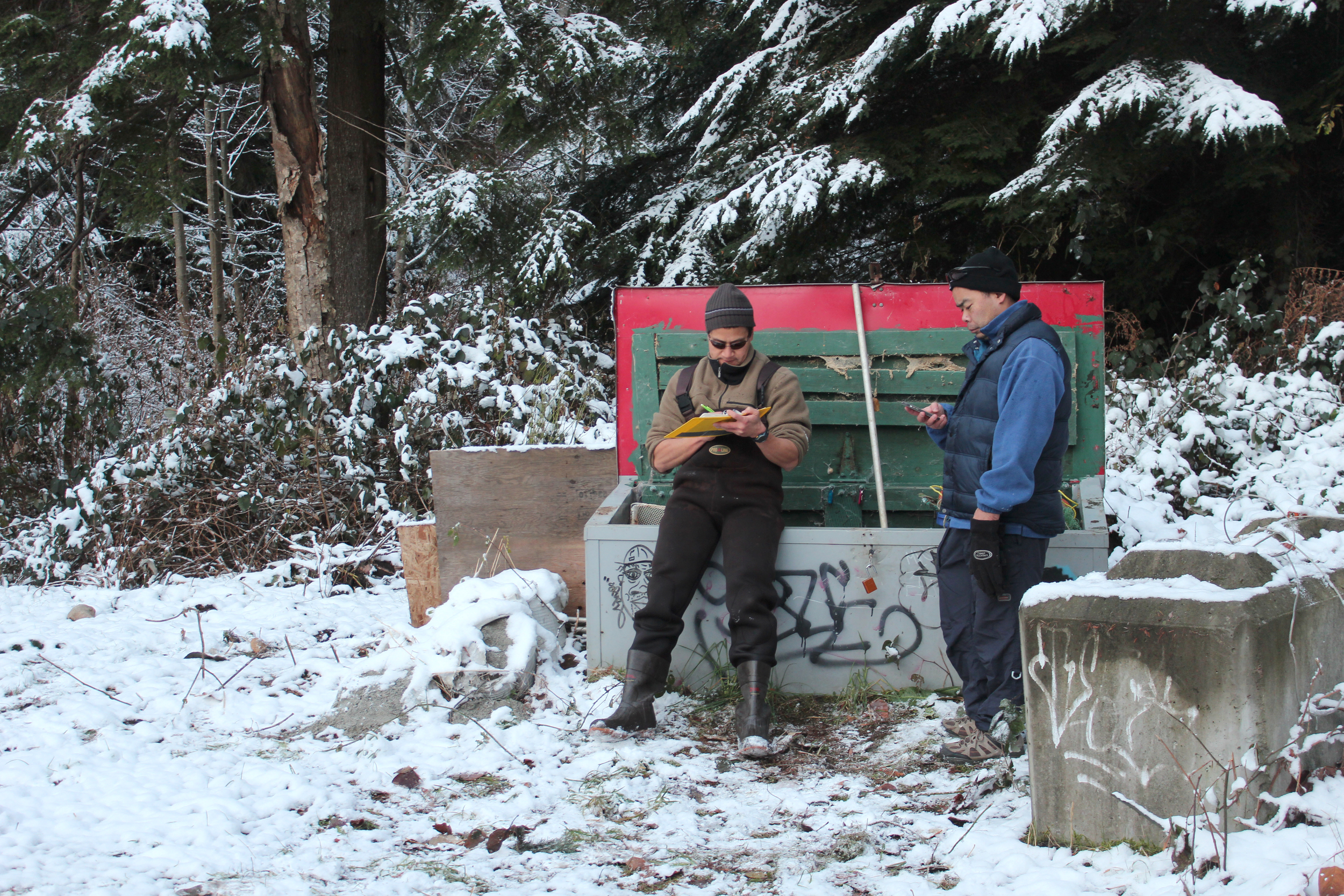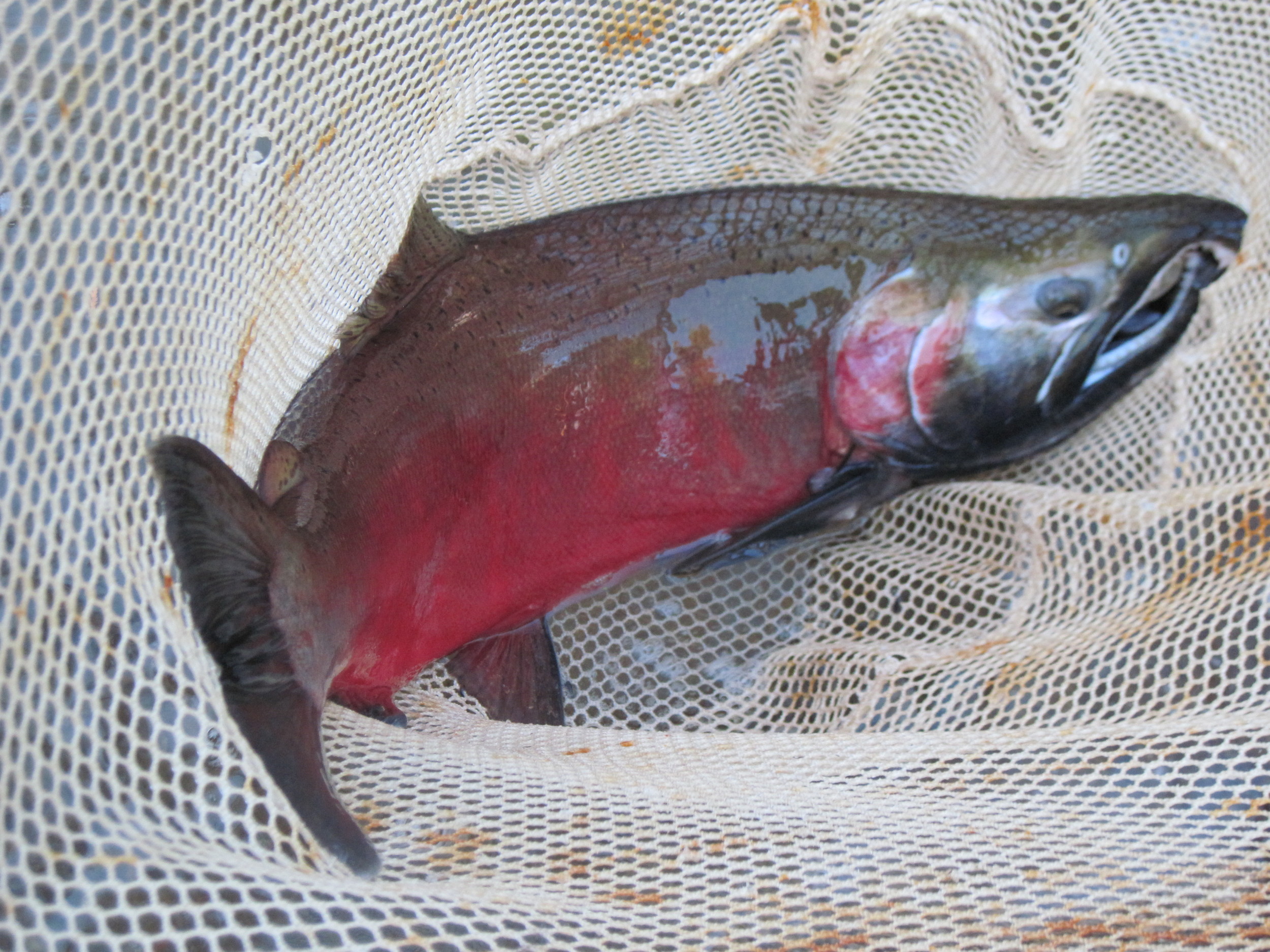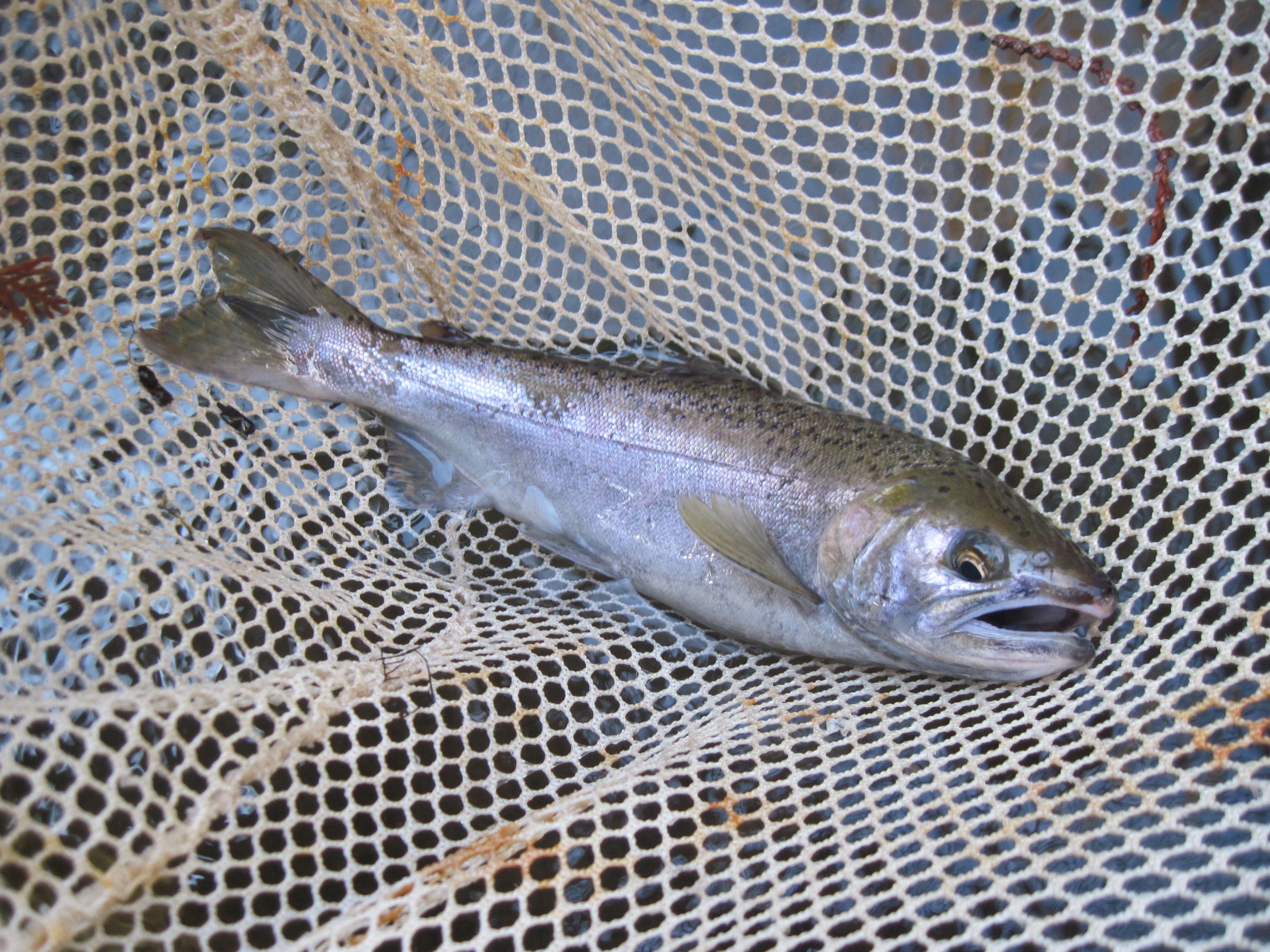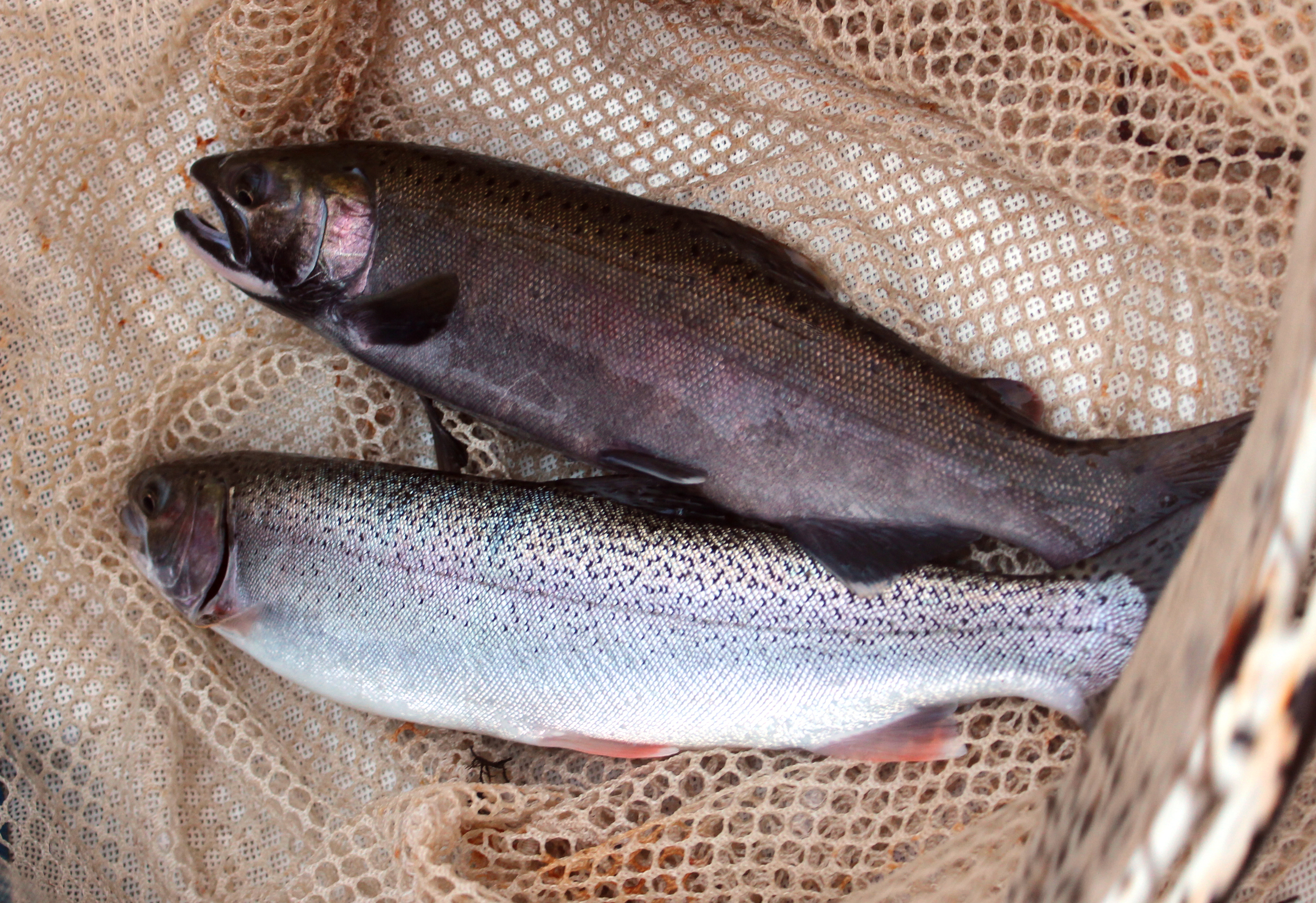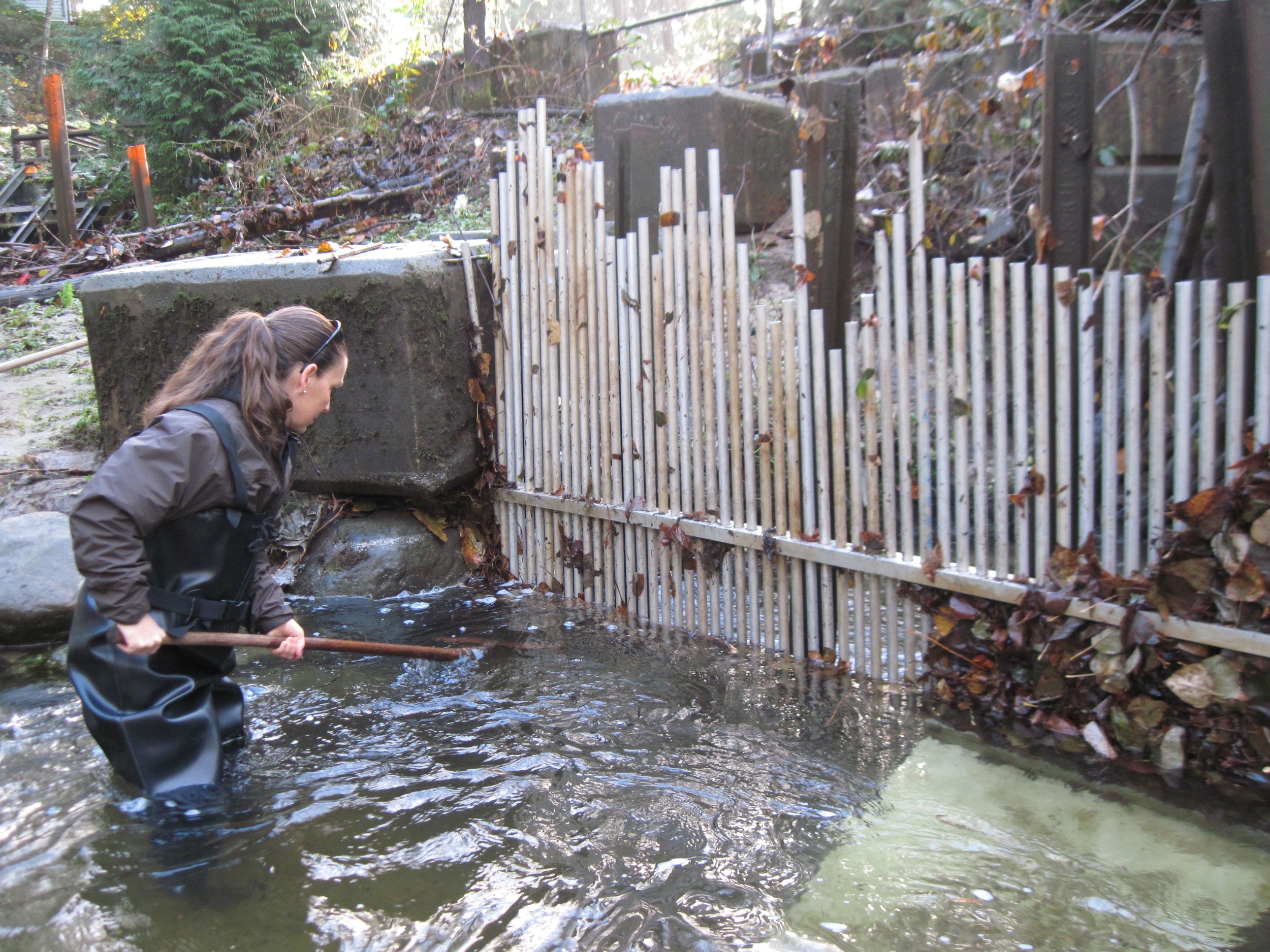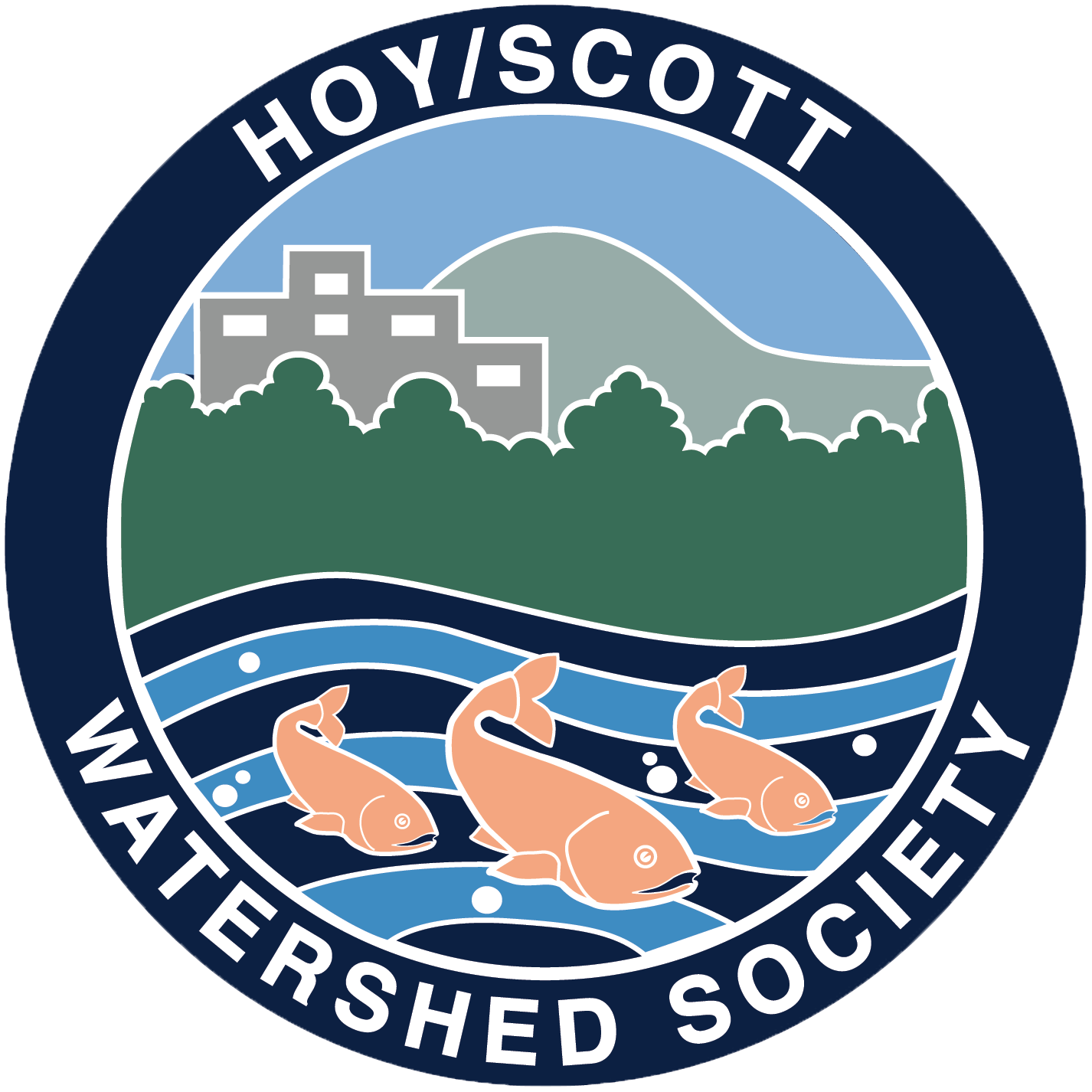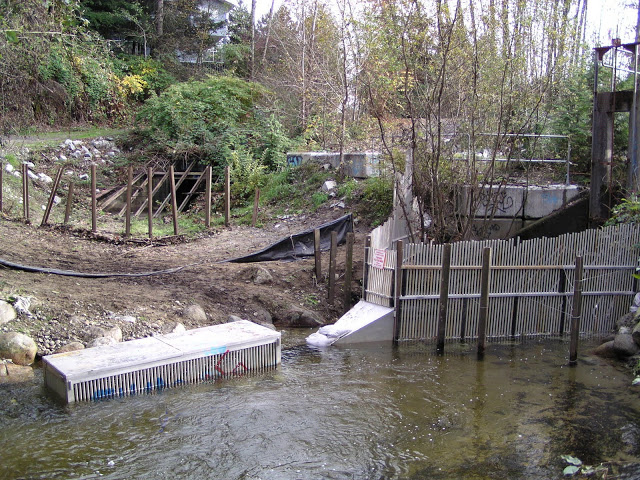Our fish trap / de-sedimentation pond is located behind the Pinetree fire hall on Hoy Creek and is vital to our brood stock collection season. The de-sedimentation pond is used to trap sediment in the water as it moves downstream. This area also has a diversion to manage high water flows and divert excess water to Lafarge Lake, versus having it go downstream and run the risk of flooding adjacent residences. Each fall, the fish fence and trap box are installed with the aim of capturing salmon brood stock to be used in our assisted spawning process.
Trap area in Hoy Creek just below the Coquitlam fire station.
A view of the trap area at low water
Capturing broodstock:
There are many ways to capture brood stock (the adult fish that are to be spawned for the hatchery) that are used by a community hatchery such as the Hoy Creek hatchery. Methods include the beach seining, dip netting, angling with a fishing rod, and trapping. In the case of Hoy Creek, our primary method is fish trapping.
Each fall, we setup a temporary fish fence and trap on Hoy Creek. The fish fence restricts fish movement further upstream, thus guiding adult fish through a cone and into the fish trap. The trap has a one-way gate, and once fish enter, they cannot go back.
Volunteers check the fish fence and trap daily when in operation. Early in the fall leaves obstruct the water flow through the fence and must be cleared off, else risk damage to the fence, given the heavy force of water during periods of heavy rainfall. The trap is also checked for fish and enumerated.
We have captured a variety of salmonids including salmon (Coho, Chum, Chinook) and trout (Cutthroat, Rainbow). Enumerating the fish in the trap helps gauge the salmon return sizes as well assess the types of fish that are in the stream. We do not retain all of the Coho we catch in the trap for the hatchery. A large number are released to spawn as wild fish. Those fish we do retain, we transport over to the hatchery in an oxygenated fish transport tub.
As needed, we may retain captured brood stock in the Capilano trough at the hatchery, to give them time to mature until they are ready to be spawned.
The VIDEO below shows seining in Hoy Creek.
The VIDEO below shows society's members about to clear the fence near the trap area as well as a view from in the water up Hoy Creek.
